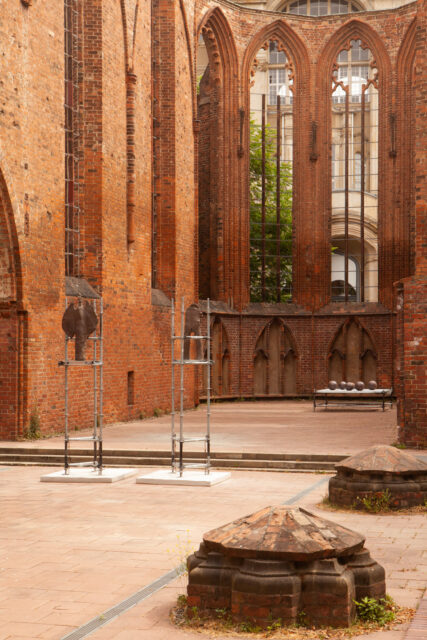From Franciscan monastery church to memorial and exhibition place of contemporary art
750 years of history of Klosterruine Berlin
Chapters
Destruction during the Second World War
Station 4
In April 1945, the Franciscan monastery church and the monastery grounds are badly hit by Allied bombing raids and largely destroyed. The remains of the church fall into Soviet occupation territory in the course of the division of Berlin. It is not until the second half of the 1950s that the ruins of the monastery church are cleared of their debris. The remaining monastery buildings are completely demolished. In the 1960s, the remaining parts of the church, such as the western front, the northern wall, the choir, the sacristy and the remains of the monastery wall, are secured and preserved as a memorial against fascism and war disasters. In the course of the urban renewal of 1968 and the accompanying widening of Grunerstraße, the ruins of the monastery building are removed, the site leveled and transformed into a green space. Extensive repair and restoration work is carried out between 2002 and 2005. Most of the medieval cult and art works removed during the war have been preserved and are now kept in the St. Mary’s church, St. Johannis in Moabit, the village churches of Buckow, Schöneberg and Zehlendorf, the Heiligengrabe monastery and the Märkisches Museum.

![Innenraum_Lithographie_1842-1[1]](https://cms.klosterruine.berlin/app/uploads/2023/03/Innenraum_Lithographie_1842-11-640x416.png)






